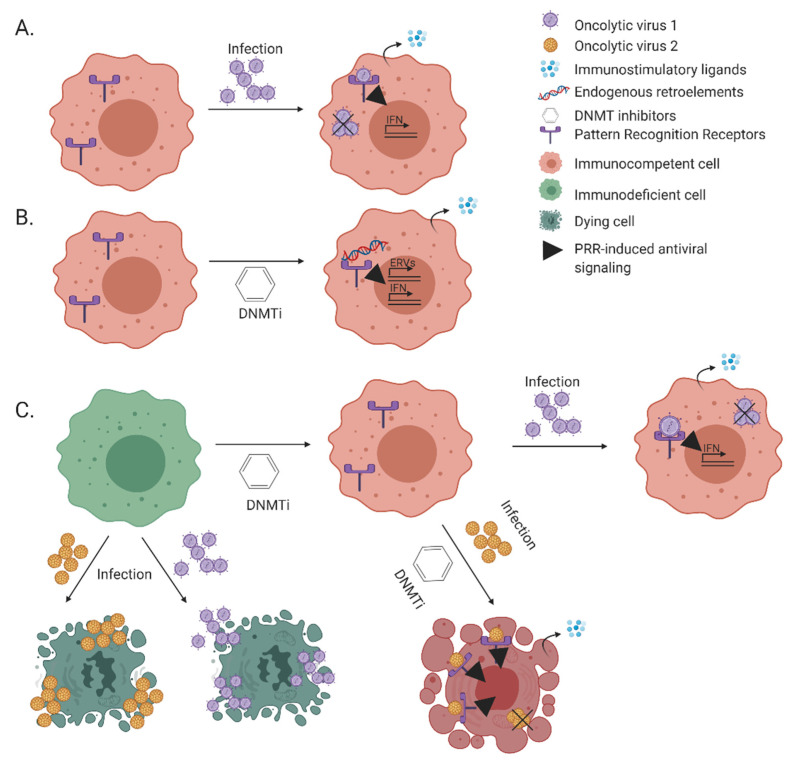Figure 3.
Immuno-stimulation: the interplay between OVs and DNMTis. (A)—Infection of oncolytic virus is aborted in an immunocompetent tumor cell in a process involving PRR-mediated PAMP sensing and secretion of immunostimulatory ligands, e.g., interferons. (B)—Immunocompetent tumor cells, when treated with DNMTis, may express endogenous retroelements and sense their products. This process is termed viral mimicry. The secreted immunostimulatory cytokines (in A or B) may act in autocrine or paracrine fashions, to induce anti-proliferative/cell death effects at the level of the cancer cell, and/or immune-mediated anti-tumorigenic effects (not depicted for sake of simplicity). (C)—The subset of immunodeficient cancer cells (green cells) can be killed directly by replicating oncolytic virus. DNMTi treatment renders them immunocompetent (green to pink shift). When combined with oncolytic viruses, the outcome of such treatment depends on the identity of the oncolytic virus. In a subset of cases (e.g. with EHDV-TAU, yellow viruses) the combined treatment induces cell death, in spite of the DNMTi-mediated reduction in viral replication (as in [152]). The figure was created with BioRender.com (accessed on 12 February 2021).

